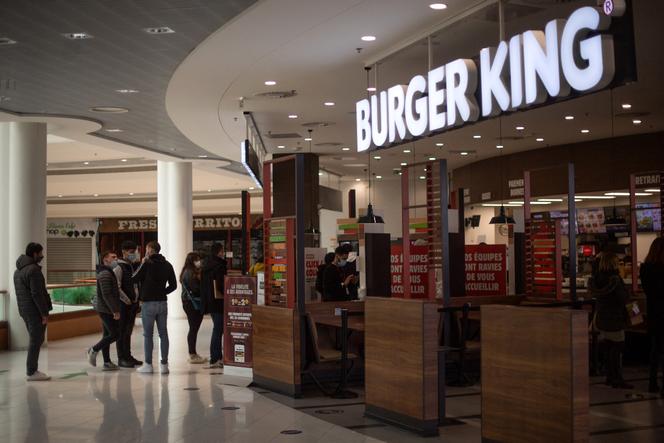 People queue at the fast food chain in a Burger King in a shopping mall, on January 13, 2021 in Saint-Herblain, outside of the city of Nantes. (Photo by LOIC VENANCE / AFP) LOIC VENANCE / AFP
People queue at the fast food chain in a Burger King in a shopping mall, on January 13, 2021 in Saint-Herblain, outside of the city of Nantes. (Photo by LOIC VENANCE / AFP) LOIC VENANCE / AFP
In the heart of the Parisian neighborhood of Les Halles, huge donuts have been erected on a white façade with humorous slogans like “Macaron, démission!” (“Macaron, resign,” a play on the slogan “Macron resign”) Nour and Chloé, two 21-year-old students, burst out laughing upon discovering them: “It’s funny, we love it.” The area is where American chain Krispy Kreme will open its first outlet on December 6. And it’s a highly symbolic sign of the times.
“It’s going to be a 550-square-meter donut temple,” boasted Alexandre Maizoué, the director general of the French subsidiary. Les Halles was not chosen at random: “It’s an area with a lot of foot traffic where workers, students and tourists converge: Perfect for fast food.” The big American brands − McDonald’s, Burger King and KFC − are all present in the neighborhood − where Nour and Chloé, like many young people, get together with their friends to “fill up on burgers.”
“As places of sociability and epicenters of new eating habits, fast-food restaurants are an ideal laboratory for studying our lifestyles and what has been happening in our cities over the past 40 years,” noted Luc Gwiazdzinski, a geographer and urban environment specialist at Toulouse’s Ecole Nationale Supérieure d’Architecture.
You have 79.57% of this article left to read. The rest is for subscribers only.

